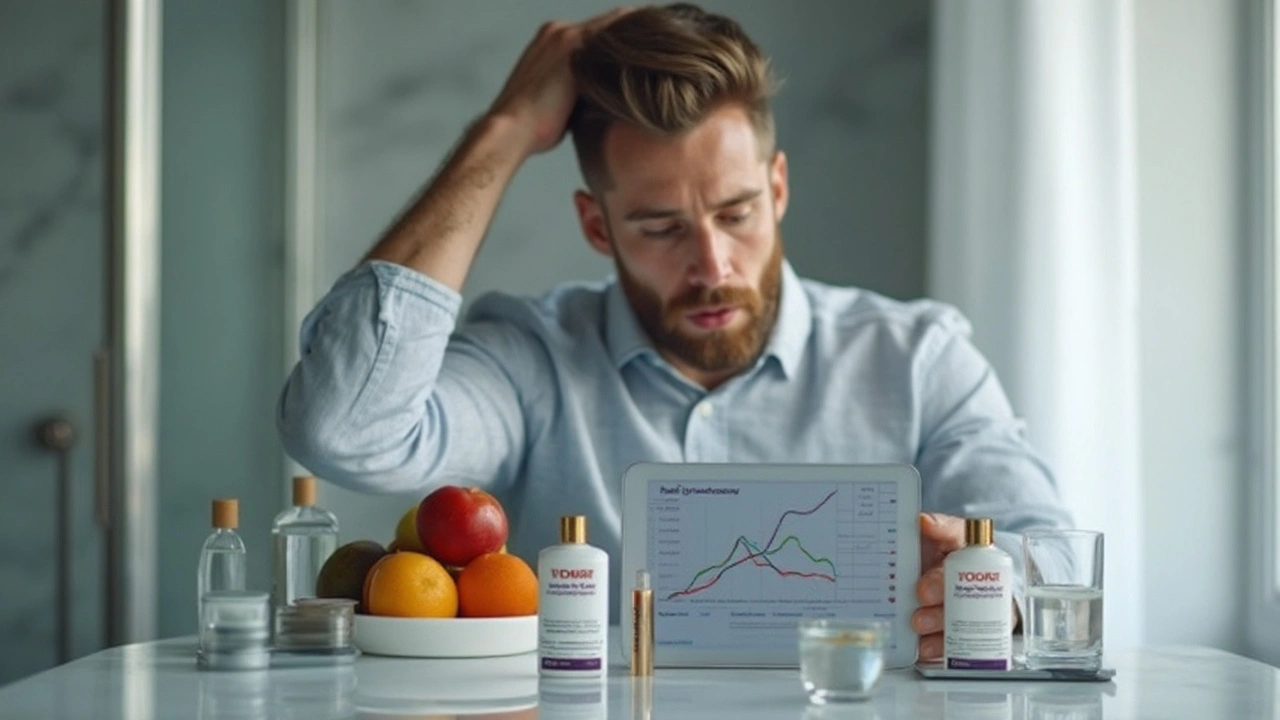If you’re worried about finasteride side effects or it didn’t work for you, there are realistic alternatives that can help slow hair loss and even regrow some hair. Below I list proven treatments, practical combos, and what to expect so you can talk to your doctor with clear options.
Minoxidil is the most widely used alternative. Applied twice daily, it widens hair follicles and boosts growth for many men and women. Results start at 3–6 months; keep using it or gains fade.
Some clinics also offer topical finasteride sprays or compounded gels. Topical finasteride targets the scalp and often causes fewer systemic effects than the pill, but it still needs a prescription and medical supervision.
Dutasteride blocks DHT more strongly than finasteride and has shown good results in clinical trials. It’s not approved everywhere for hair loss, and side effects overlap with finasteride. If finasteride didn’t help, some people respond to dutasteride — but discuss risks with a specialist before switching.
Platelet-rich plasma (PRP) injections use your own blood to stimulate follicles. Many clinics report visible thickening after 3 sessions spaced a month apart, then maintenance every 6–12 months. Microneedling combined with topical treatments can boost absorption and results. Low-level laser therapy (LLLT) devices — caps or combs — offer an at-home, drug-free option that can improve density over months.
Hair transplant surgery gives permanent results for many. Modern follicular unit extraction (FUE) offers natural-looking grafts with faster recovery. Surgery is best when hair loss has stabilized and donor supply is good.
Healthy diet, enough protein, and vitamin D can help hair quality. Biotin helps only if you’re deficient. Pumpkin seed oil and saw palmetto have modest evidence as natural DHT blockers; they might help mild cases. Avoid tight hairstyles and harsh chemical treatments that speed shedding.
Decide based on how fast you’re losing hair, how much you want regrowth, and how you weigh risks. If you want to avoid systemic drugs, start with topical minoxidil, LLLT, and lifestyle fixes. If you need stronger results, talk to a dermatologist about dutasteride, topical finasteride, PRP, or surgery.
Any hormonal blocker can affect libido, mood, or hormones. Always discuss blood work and side effects with your doctor. If you plan to try supplements, check interactions with other meds.
Costs and timelines vary. Over-the-counter minoxidil costs $10–40 monthly. LLLT devices run $150–400 one-time. PRP sessions usually cost $300–800 per treatment; surgery ranges widely based on grafts and clinic. Expect to wait 3–12 months to see clear changes. Track progress with photos every month to know what's working and when to change course. Insurance rarely covers cosmetic treatments. Check policies early.
Want help comparing options for your age and hair pattern? Ask your doctor about a scalp photos series and a simple hair pull test — they make choosing a path easier.

Searching for fewer side effects than finasteride in 2025? This article explores the best substitutes for hair loss: low-dose dutasteride, ketoconazole shampoo, and smart lifestyle changes. Find real numbers, actionable tips, and science-backed insights into managing hair loss for men who want options beyond the usual prescription. All facts, no fluff—delivered with clarity. Get to know what actually works and how to reduce risks.
More